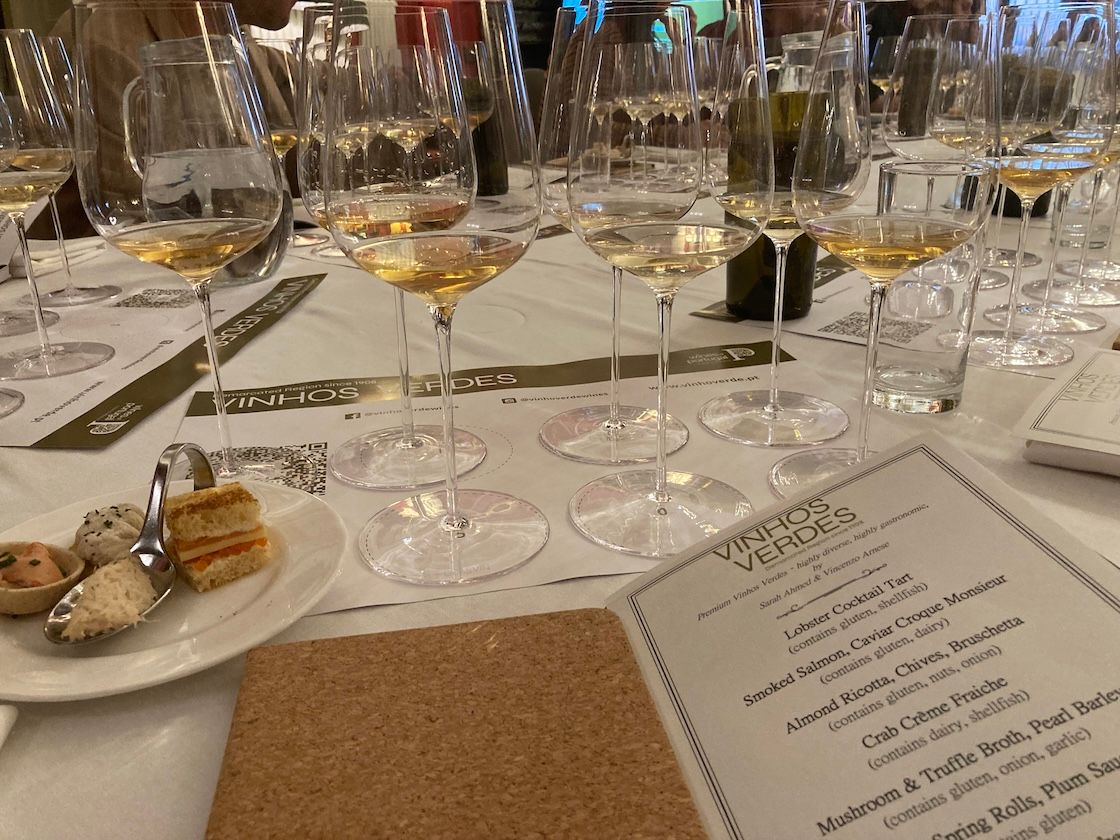Vinho Verde has an enduring image as a clean, straightforward wine, perfect for summer drinking, typically in a flute bottle, often with a little spritz of CO2 to make it even more of a guilty pleasure. And so it can be, with brands like Casal Garcia and Gazela selling for around €5 in Portuguese supermarkets and making up much of the Vinho Verde region’s 96 million litres of annual production. It’s a wine you struggle to not like but, scratch a little deeper, and you get a rather different story.
“There’s nothing at all wrong with swimming pool wines but recent years have seen a growth in wines with more vineyard expression. Growers and winemakers are increasingly working with local varieties that reflect the region but are also trying different styles,” says Sarah Ahmed, aka The Wine Detective.
She points out that the denomination – Portugal’s largest, covering 24,000 hectares, from the River Douro at Porto up to the River Minho close by the Spanish border and demarcated since 1908 – stretches 130km, with a huge variety of terroirs. It has mostly granitic soil across all nine distinct sub-regions, of which the inland Alvarinho-producing region of Moncão e Melgaco is probably the most renowned.
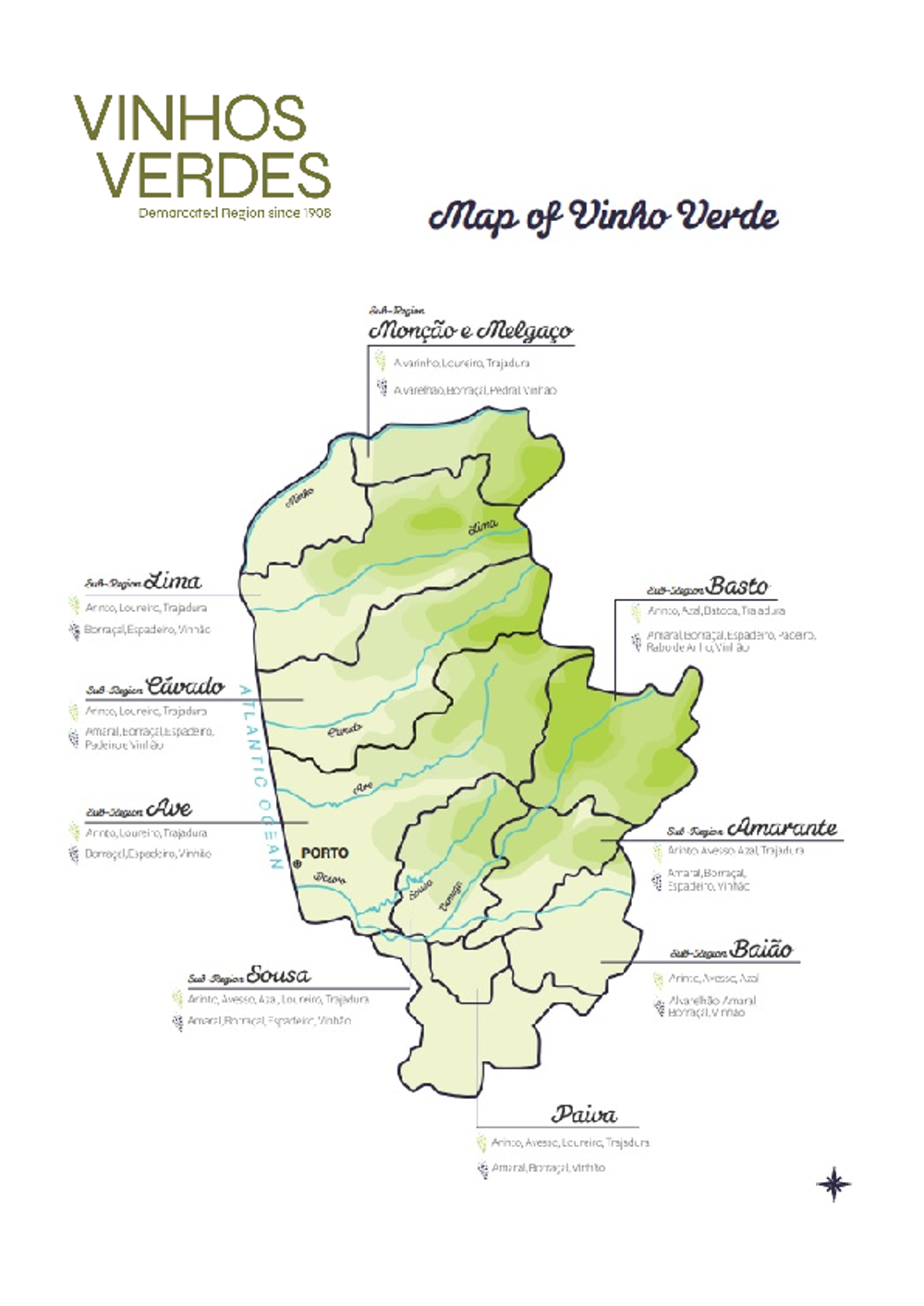
In all, these Vinho Verde producers are now making the type of ambitious and expressive wines you wouldn’t have seen ten years ago, with organic and biodynamic practices increasingly widespread. What makes this all the more remarkable is how cold and wet the region can be: lying between the Atlantic and the mountains to the east, it can see 1200mm of rain between October and April, with low cloud, dampness and mildew all par for the course.
This is another major evolution for a region which, until the late 1980s, was more focused on red wines, mostly made with the very dark Sousão/Vinhão variety – highly acidic but quite light. These made little headway in export markets, particularly in an era when full-on, oaky wines were in, paving the region’s shift towards light white wines (with ABV between 9-11.5%), with more consumer appeal, which became more significant following Portugal’s accession to the EU in 1986.
Vincenzo Arnese, wine director at Raffles echoes Ahmed, adding that a lot of the more ambitious, small volume wines should almost be treated as if they were red wines, decanted and allowed to breathe before serving.
“And they should not be too cold” he added, warning away from treating them like mainstream Vinho Verde wines.
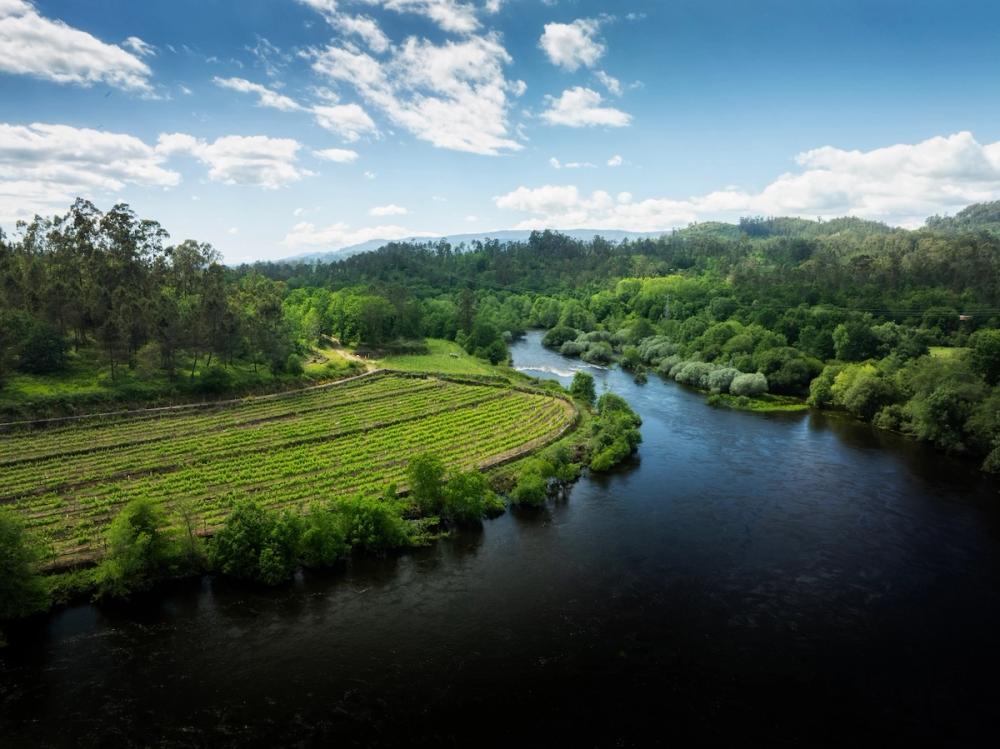
Alvarinho now accounts for 10% of the total Vinho Verde production with around 60 producers and over 2000 growers
Ahmed and Arnese were delivering a two-part masterclass on the new Vinho Verde called Premium Vinhos Verdes: Highly Diverse, Highly Gastronomic and Moncão e Melgaco: The Many Faces of Alvarinho which sought to dispel traditional one-dimensional notions about Portugal’s famous ‘green’ wine.
Pairing 19 wines with a variety of foods, it showcased local varieties including Louriero (famously aromatic and “laurel scented”), Avesso, Arinto and Azal (all high acid grapes) as well as Alvarinho, to my mind at least the shining jewel in the crown here.
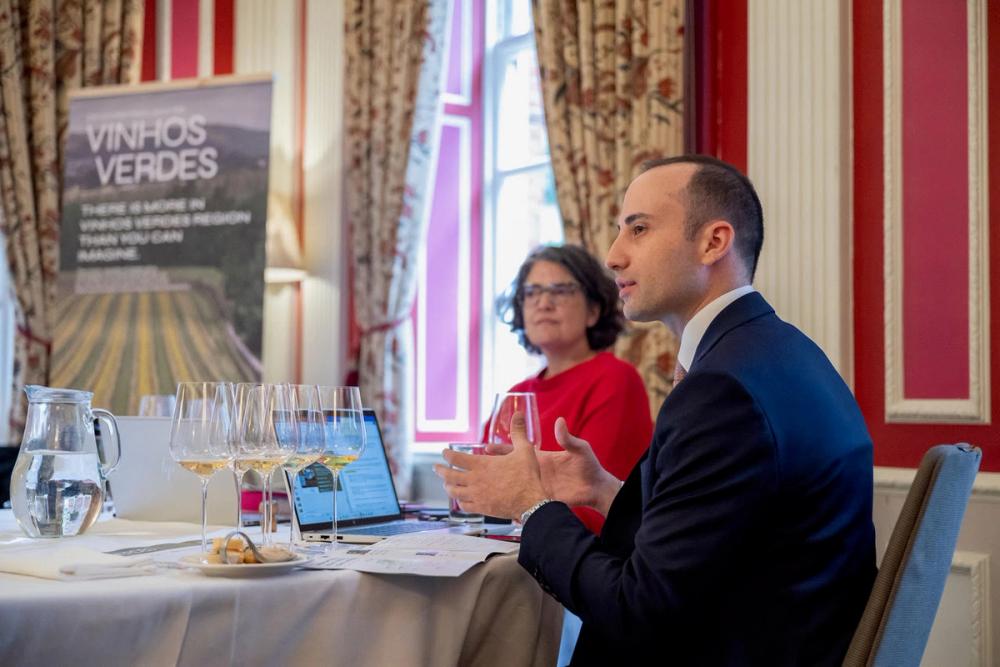
Sarah Ahmed MW and Vincenzo Arnese were able to take the sommeliers through the Vinho Verde tasting
As Ahmed pointed out, the quality of Alvarinho, which now accounts for 10% of the total Vinho Verde production with around 60 producers and over 2000 growers, is largely a reflection of the climate in Moncão and Melgaco, in the inland far north of the Vinho Verde region, which is naturally indulgent to the Alvarinho grape.
“It’s what you might call a Goldilocks situation – not too hot, not too cold, too wet or too dry, with big diurnal temperature differences leading to early bud break and therefore a longer growing season.”
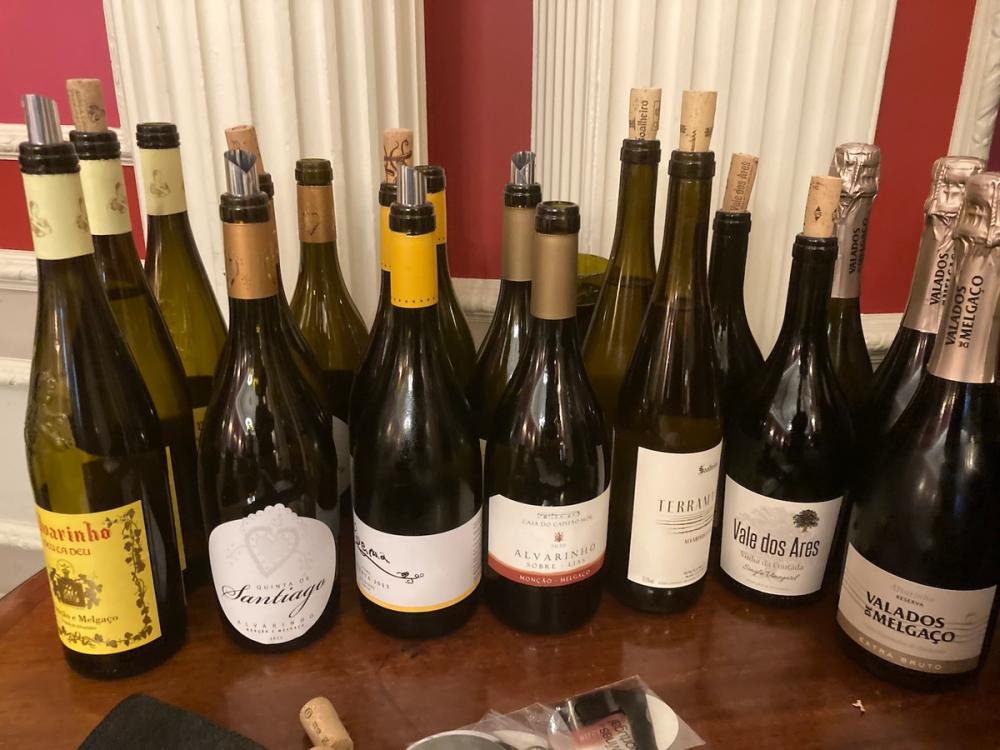
So which wines stood out from the two sessions?
Here’s six of the best.
First off, for me at least something of an oddity a sparkling wine produced by Casa de Cello, the Quinta de San Joanne Brut 2011. Sparkling wines have been legal in the Vinho Verde region since 1999 and this is a fine example made from the grapes Avesso and Arinto, both high acid varieties, which is probably why this very dark yellow 13-year-old wine was showing so well. Spending four years on the lees and another four in bottle, with second fermentation in the bottle, this is an amazingly nuanced and complex wine, pairing well with my lobster nibbles. (Imported by Les Caves de Pyrene).
Next off, another left fielder, an NV wine (actually a blend of the 2020, 2019 and 2018 vintages) Special Family Collection Nº2 produced by Quinta da Raza in the far inland, relatively warm Basto sub-region, close to Trás-os-Montes. A lot of blending here (something the Portuguese love) firstly of those three vintages but, before that, of the three varieties used, Avesso, Alvarinho and Gouveio (aka Godello in Spain), before all go into oak for 12 months on fine lees. The result is a satisfying still evolving wine, surprisingly high in alcohol at 13.5% ABV but carried well. (Raymond Reynolds).
Daphne, from Aphros Wines, is a great showcase for Loureiro and this 2011 wine shows huge complexity with 22 hours of skin fermentation followed by ageing in French oak and chestnut wood. Made biodynamically this went really well with our seafood nibbles. (Les Caves de Pyrene).
Red wine now accounts for just 3% of total wine produced in the Vinho Verde region, and most stays in Portugal but the Zafirah 2023 by Constantino Ramos is a fascinating field blend taken from 50-year-old vines of Alvarelhão, Borraçal, Espadeiro, Pedral and, of course, Vinhão. This had a complex, almost haunting nose suggesting tobacco, pepper and mint, whilst the palate was almost ethereal, with dark berry fruit predominant. (Festa).
Winemaker Anselmo Mendes is probably Vinho Verde’s most renowned personality and has become justly famous for his Alvarinho wines, enough to encourage the Anglo-Portuguese Symington Family to start a joint venture with him at their newly acquired property at Casa de Rodas in Moncão e Melgaco. Alvarinho can be tricky to work with – the grapes are small and come in small bunches, meaning small yields because of the high skin/pip to juice ratio – but Mendes, of course, is the master. Ahmed and Arnese were showing his iconic Parcela Única 2016, a delicious and surprisingly rounded wine aged in fine oak with great length on the finish. Ahmed says this would appeal to lovers of white Burgundy and I wouldn’t argue with that. (Clark Foyster).
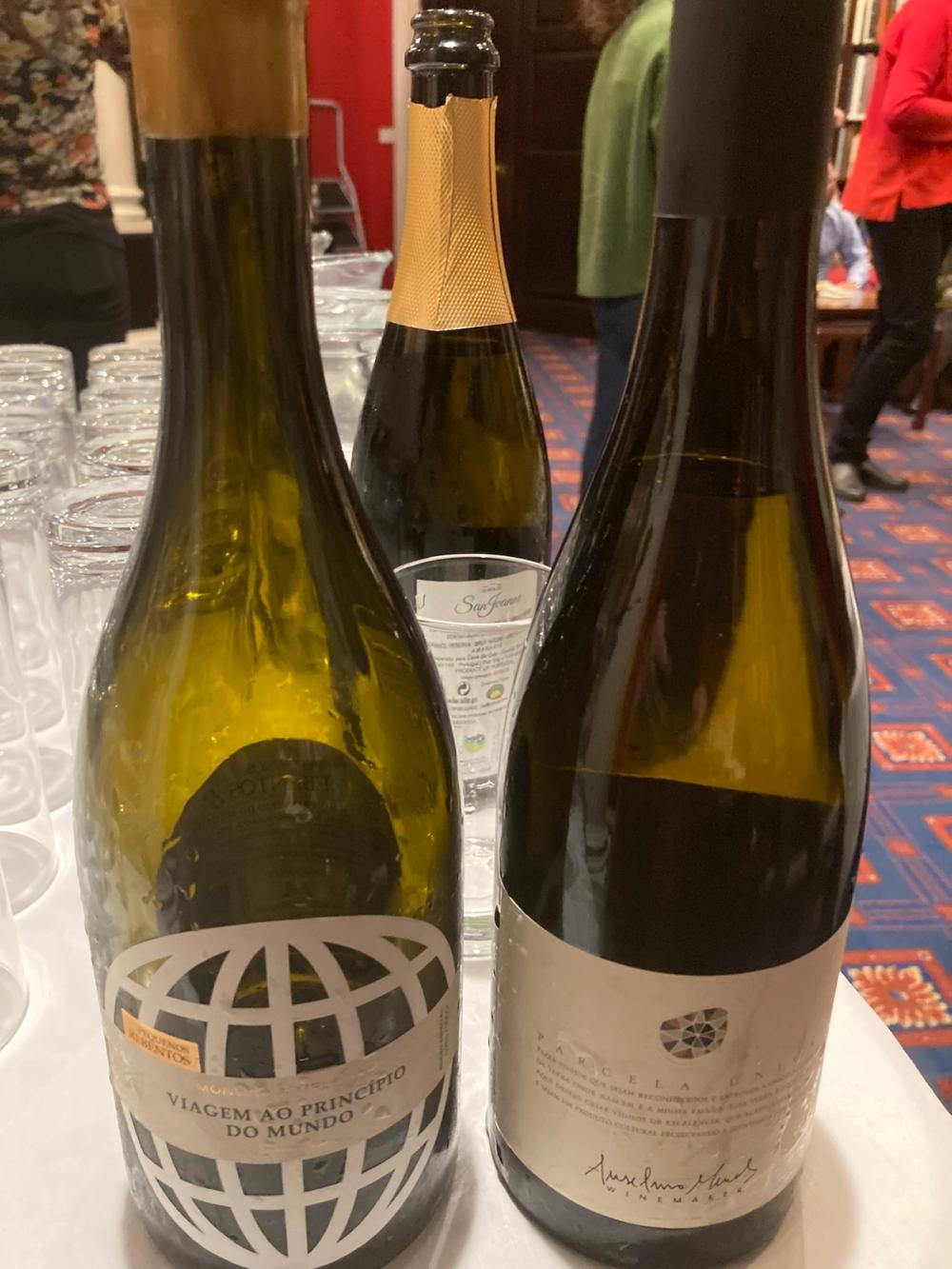
Unsurprisingly, Mendes has his disciples and one producer following his lead after two years working at his side is Márcio Lopes, whose Pequenos Rebentos Viagem ao Princípio do Mundo 2020 was at €60, the most expensive wine shown here. And what a wine: bunches are foot trodden then the grapes fermented on their skins for 39 days before being aged under flor in old sherry casks for 18 months, before another 18 months of ageing in Bottle. Substantial, with 13% alcohol and quite rounded with a long finish. Memorable. (Indigo Wines).
Possibly my favourite wine of the tasting, though, was Soalheiro Terramatter Alvarinho 2023 from another master of the variety who makes no fewer than 17 cuvées of Alvarinho, with The first Soalheiro wine having been made in 1982 . This wine is made from organic grapes that have minimal intervention but undergo part-malo in chestnut barrels, steel and concrete eggs. The result is an amazingly fresh and approachable wine, just 12.5% ABV but with well-integrated acidity. (Raymond Reynolds).
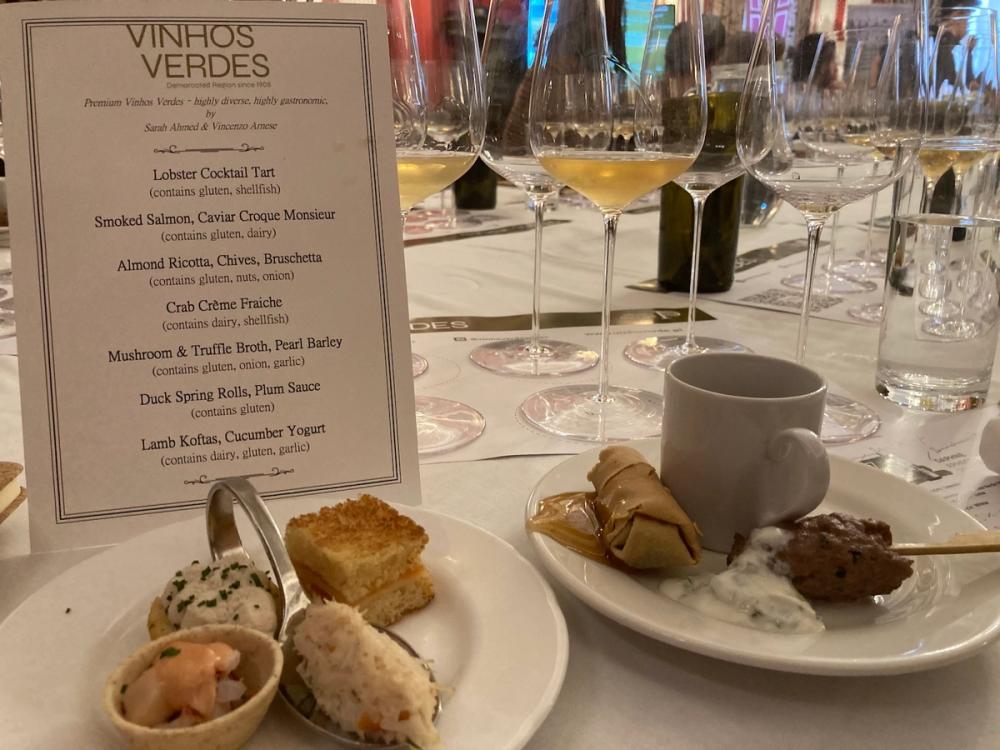
So, what was my overall take?
With both masterclasses aimed at sommeliers, obviously, these wines are aimed at a very different market than the Vinhos Verdes most people are familiar with; these are gastronomic rather than aperitif wines, and being often tiny volume have a price tag to match (between £25-60). Frankly, some may find the acidity in some of them a bit much, even after exposure to oxygen, however, you get the sense winemakers are playing around, and experimenting, which is always exciting, and the styles offered here were indeed very diverse, as the title of the tasting promised.
The Alvarinho wines were generally outstanding and, although stylistically quite different from Albariño over the border in Rías Baixas, should give the Spanish a serious run for their money.
“The fact that the Symington Family and Fladgate have both bought into the region recently (Casa de Rodas and Royal Palmeira respectively) confirms that it has so much potential,” says Ahmed.
And so it does. Vinho Verde’s journey into nuance and complexity is very much in its early stages and it will be fascinating to follow the path.
